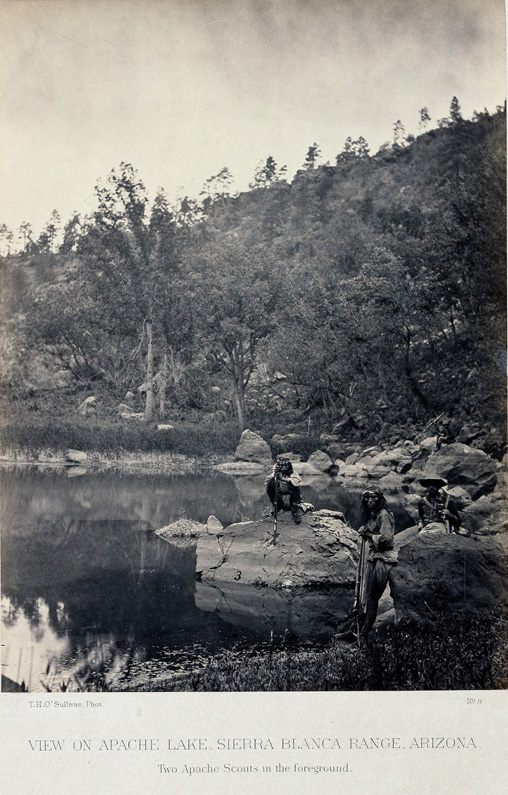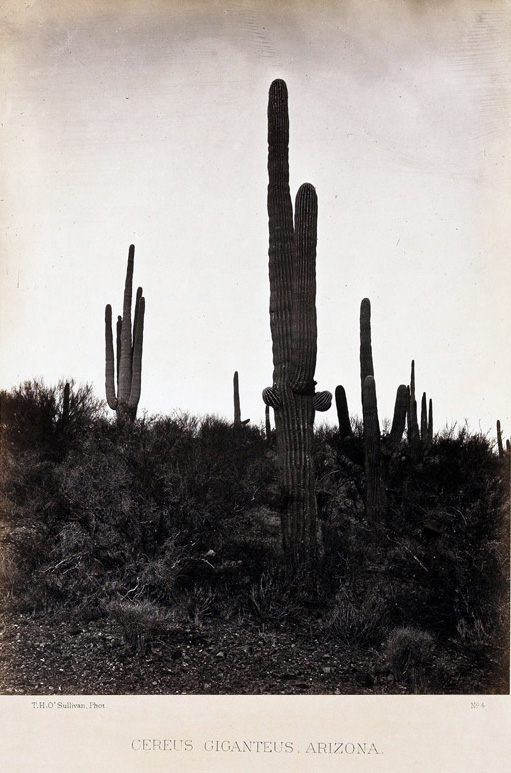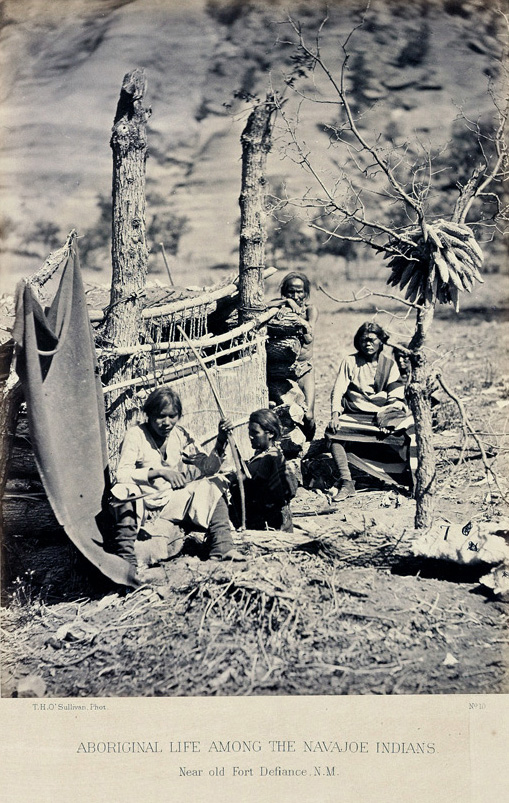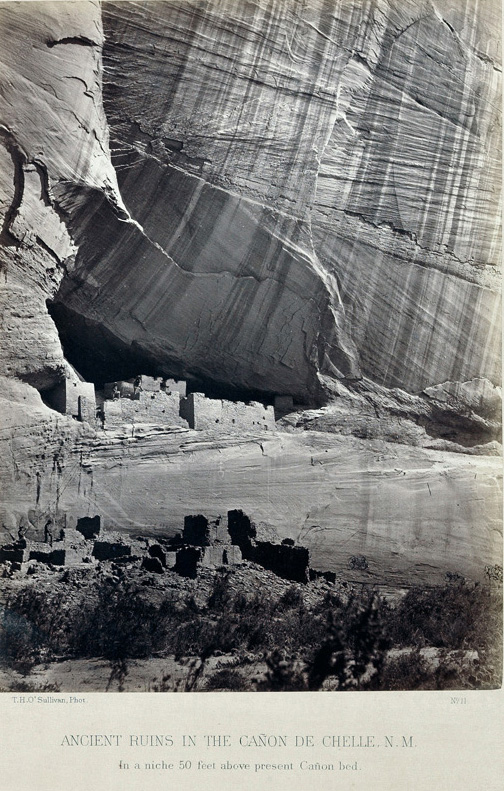Born in Ireland around 1840, Timothy H. O’Sullivan and his family emigrated to the United States when he was a small child. As a teenager in New York City, Timothy found work with Matthew Brady and his photography studio, made famous by its gripping and highly circulated images during the American Civil War. Although eclipsed by his company’s namesake, O’Sullivan captured some of the most famous images ever published by Brady’s shop, including “The Harvest of Death” and “Dead Confederate sharpshooter at the foot of Little Round Top,” both from the aftermath of battle at Gettysburg, Pennsylvania, in July 1863.
 |
|
 |
|
 |
- View on Apache Lake, Sierra Blanca Range, Arizona, Two Apache Scouts in the foreground
|
|
Cereus Giganteus, Arizona |
|
Aboriginal Life among the Navajoe Indians, Near old Fort Defiance, N.M. [now Arizona] |
After the war, O’Sullivan became the official photographer of the United States Geological Exploration of the Fortieth Parallel (“King Survey”) from 1867 until 1869 before briefly joining a surveying expedition for a future canal across Panama. Then, in 1871, he joined Army Engineer Lt. George M. Wheeler on his western expedition, and again embarked with Wheeler in 1873 as part of his monumental effort to map the entire territory of the United States west of the 100th meridian (located roughly where the Texas panhandle meets Oklahoma). O’Sullivan remained with the “Wheeler Survey” until 1874, when he returned east to publish his prints for the Corps of Engineers.
O’Sullivan took wet-plate photographs in the field using two cameras, and the resulting images depict mining sites and towns, landscapes and river scenes, military forts, camp scenes, geologic formations, and American Indians. His photographs from the Wheeler Survey depict traditional Native American life as it was not long after the Indians’ first contact with European-Americans, along with the beauty, scarcity, and hostility of the landscape of the American southwest. In fact, O’Sullivan nearly perished during the survey when several of the expedition’s boats capsized, sinking not only many of his negatives but also most of their food rations. Fortunately, he and many of his photographs survived.
 |
|
 |
|
 |
- Grand Cañon of the Colorado River, mouth of Kanab Wash, looking east
|
|
Grand Cañon, Colorado River, near Paria Creek, looking west |
|
Ancient ruins in the Cañon de Chelle, N.M. In a niche 50 feet above present cañon bed |
The Headquarters Office of History maintains a collection of O’Sullivan’s original prints from the expedition. The set comprises twenty-five of O’Sullivan’s photographs taken during his time on the Wheeler Survey. The Office of History owns forty of his photographic prints (fifteen of them being duplicates), mounted and captioned on heavy card stock. In 2014 the Conservation Center for Art and Historic Artifacts digitized the prints for public dissemination and conserved the originals for long-term preservation. You can browse six of the public domain photographs here or all twenty-five on the USACE Digital Library.
Office of History, Feb. 2017